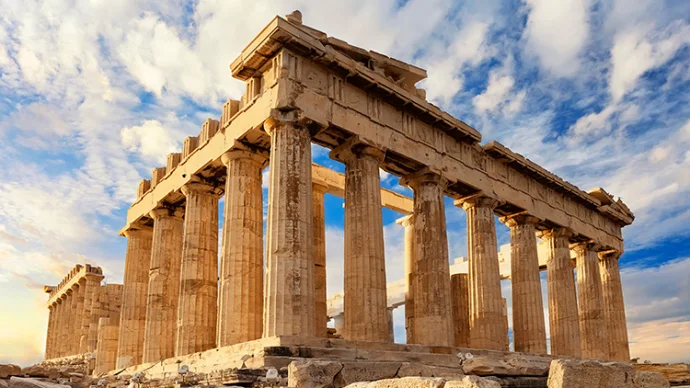
About Selinunte
Selinunte is an Ancient Greek archaeological site in southern Sicily containing the ruins of an acropolis surrounded by 5 historic temples, mostly dating to the 6th to 5th centuries BC. The sites at Selinunte are relatively meagre when considering that this would once have been a great city of Magna Graecia; founded in the mid-7th century BC yet largely destroyed by the Carthaginians in the 5th century BC.
Of the temples at Selinunte, only one has been substantially partially reconstructed, its standing Doric columns offering an impressive sight.
History of Selinunte
Selinunte is undoubtedly one of Sicily’s great Greek archaeological sites. It is situated by the south-western corner of Sicily, and has stood abandoned for most of its history.
Founded in the 7th century BC by Greeks from Megara Hyblaea, itself a colony of Megara in Greece, Selinus was spread over a couple of low hills on the seashore.
The town likely reached its biggest size during the 6th and 5th centuries BC, which was when its grand temples were constructed. Though its buildings would have given off the impression of grandeur, the city itself was more likely a large town which wanted to give off the impression of being larger and more intimidating.
The Carthaginians attacked Selinus in 409 BC, which ruined many of its buildings, and certainly marked the end of the once sprawling and architecturally grand city.
The destruction of the site was furthered during the Middle Ages as a result of a number of earthquakes, and was subsequently forgotten until it was rediscovered in the 16th century.
Archaeological excavations began during the 19th century and still continue to this day, and have yielded a number of fascinating finds.
The site now covers around 270 hectares, and can largely be divided into the following areas: The Acropolis in the centre with temples and fortifications, the Gaggera Hill in the West with the sanctuary of Malophoros, the Mannuzza Hill in the north with ancient housing, the East Hill in the east with other temples, and the necropolis.
Selinunte Today
Today, the lack of development in the area allows visitors to vividly imagine the grandeur of the once sprawling city.
Upon entering the site, the first building – known simply as Temple E – is the grandest. The large Doric temple was restored in the 1950s and stands grandly on a rise. Unusually, visitors are allowed to climb inside the temple.
On the western hill is a small museum which exhibits finds from the site and gives an idea of how the temples – brightly painted and decorated – would have once looked.
Getting to Selinunte
From the centre of Sicily, the site is a two and a half hour drive via SS640 and SS115. It is also near the stunning and historic Mazara del Vallo (spelt Mazzara until the Second World War). From there, Selinunte is a 30 minute drive, via the A29/E90 roads.
Featured In

Greek Ruins Sicily
Explore the Mediterranean's largest island through the footsteps of the Ancient Greeks in our guide to the most incredible Greek ruins in Sicily, from the Valley of the Temples to Selinunte and more.

Greek Ruins in Italy
Discover the best Greek ruins in Italy, from Paestum to the Syracuse Archaeological Site and more, includes an interactive map of ancient Greek sites in Italy.

Greek Temples
The ultimate guide to the very best Greek temples in the world, from Agrigento to Paestum and more, includes an interactive map surviving temples from Ancient Greece.




















